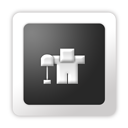OVERVIEW
Tetanus is an acute nervous system disease, caused by the bacteria Clostridium tetanii, that leads to painful spasms/stiffness of body muscles. C.tetanii enters the body through wounds where it multiplies rapidly and produces the tetanus toxin, Tetanospamin, a neurotoxin which acts at neuromuscular junctions. Major signs and symptoms include spasms and stiffness in muscles of the jaw (hence its name, Lockjaw), neck, chest, back, abdomen, buttocks and even the trachea (i.e. the breathing tube or windpipe). There is no specific treatment for tetanus. It can only be managed by wound care and medications. Tetanus is best prevented by administering the tetanus vaccine, DTaP, and booster shots after every 10years |
| A TETANUS PATIENT: THE PATIENT EXPERIENCES SPASMS/STIFFNESS IN MUSCLES OF THE NECK, CHEST AND BACK |
CAUSE/WHAT ACTUALLY HAPPENS DURING TETANUS
Tetanus, also known as Lockjaw or Trismus, causes spasms in neck, throat, chest, back, abdomen, buttocks and even breathing muscles.The tetanus bacteria, Clostridium tetanii, exists as spores outside the body and can be found most commonly in soil, dust and animal feces/manure.
*Singular: Bacterium; Plural: Bacteria. We will/use the term "Bacteria" in this context because the disease condition is caused by numerous C.tetanii organisms and not just an individual organism*
DID YOU KNOW THAT PASSING OUT FAECES AND GAS IS A LUXURY? IF YOU DOUBT THAT, THEN ASK SOMEONE WHO HAS HAD CONSTIPATION
Clostridium tetanii enters the body through skin traumas/injuries. These include
- Puncture wounds: These are excellent locations of entry for the bacteria. They include wounds caused by nails, splinters, body piercings, tatoos, non-sterile injections, circumcisions etc
- Animal bites
- Gunshot wounds
- Compound fractures
- Burns
- Surgical wounds
- Ear infection, etc
The incubation period for Tetanus is usually about 8days, but may be up to several months in exceptional cases. As a rule, the further the injury is from the Central Nervous System (i.e. the brain and the spinal cord), the longer the incubation period. The shorter the incubation period, the more severe the symptoms
Due to the ubiquitous nature of C.tetanii spores, Tetanus is an international health problem. It is more common in hot, damp climates with soil rich in organic matter. This particularly true with manure-treated soils as the spores are widely distributed in the intestines and faeces of many animals such as horses, sheep, cattle, dogs, cats, rats, guinea pigs and chickens.
TYPES
Tetanus is of 4 major types:- Generalized Tetanus: This is most common and affects a lot of muscles in the body
- Localized Tetanus: This is uncommon. It manifests as persistent stiffness of muscles around the area of the injury
- Neonatal Tetanus: This is a form of generalized tetanus that occurs in newborns
- Cephalic Tetanus: This is very rare and occurs following ear infections or head injuries
SIGNS AND SYMPTOMS
Common signs and symptoms of tetanus in order of their manifestations are- Spasms and stiffness in jaw or chewing muscles, hence the name "Lockjaw"
- Spasms of the neck and throat muscles. This causes difficulty in swallowing
- Spasms in muscles of the chest, back, abdomen and buttocks. Back muscle spasms often causes the spine to arch backwards. This is called Opisthotonos and it mostly happens in children
- Fever
- Excessive sweating
- Drooling
- Irritability/Sensitivity to touch
- Uncontrolled urination and defecation
- Rapid heartbeats
- Elevated blood pressure
TREATMENT
Since there is currently no clear-cut cure for tetanus, treatment usually aims at wound care, administering medications to stop toxin production, neutralizing its effect and control of muscle spasms- WOUND CARE: Cuts and wounds should be thoroughly cleaned so as to prevent infection. A tetanus-prone wound should be treated immediately by a medical professional. According to the National Health Service (NHS), UK, a tetanus-prone wound is defined as follows:
- A wound that requires surgical intervention that is delayed for over six hours.
- A burn that requires surgical intervention that is delayed for more than six hours.
- A wound or burn that has a considerable amount of removed (devitalized) tissue.
- Any puncture-type injury that has been in contact with manure or soil.
- Serious fractures where the bone is exposed to infection (compound fractures).
- Antitoxins: Tetanus Immunoglobulin (TIG) should be administered to a wounded person as soon as possible
- Antibiotics: Antibiotics such as Penicillin and Metronidazole can be administered to prevent the bacteria from multiplying and producing Tetanospamin. Patients who are allergic to penicillin or metronidazole can be given Tetracycline instead
- Drugs for muscle spasms and stiffness: These include: Anticonvulsants such as Diazepam and Phenobarbital; Muscle Relaxants such as Baclofen and Dantrolene; Neuromuscular blocking agents such as Vacuromium
- Proper nutrition: A tetanus patient requires a high-caloric diet daily because of increased muscle activity
- Artificial breathing aids/Ventilator: No matter what happens, if the patient will survive, the airways MUST be maintained. In severe cases of tetanus where the breathing muscles are affected, patients will need artificial respirator machine to breathe
DID YOU KNOW THAT SYPHILIS CAUSES RASHES TO DEVELOP ON THE PALMS OF THE HANDS AND SOLES OF THE FEET?
PREVENTION
Unfortunately and unlike most diseases, recovery from a bout of tetanus does not confer the patient with a life-time immunity. This is due to the extreme potency of the Tetanospamin toxin. The best and most effective preventive measure is Vaccination!Almost all cases of tetanus occur in people who have never been immunized (never had the vaccine) or who did not have a booster shot within the last 10years
The tetanus vaccine is usually given to children as part of the Diphtheria Tetanus toxoid and acellular Pertusis (DTaP) vaccine. This vaccination provides protection against 3 diseases: Diphtheria (a throat and respiratory infection), Pertusis (whooping cough) and Tetanus
The DTaP vaccine consists of 5 shots usually given in the arm or thigh of children when they are
- 2months old
- 4months old
- 6months old
- 15-18months old
- 4-6years old

















0 comments :
Post a Comment
Your comments are highly welcomed